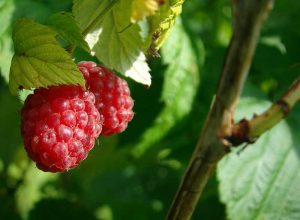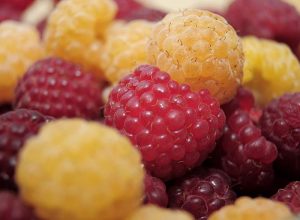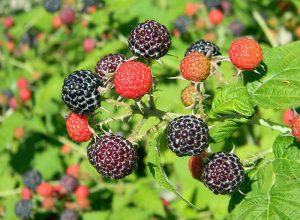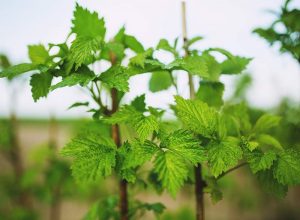Lampone – Rubus Idaeus


Along the country roads, in the woods in the hills and in the mountains, in the uncultivated areas, it is very easy to find thin stems, covered with soft thorns that in summer end with clusters of small very tasty red berries: we are facing the wild raspberry.
Impressed by their flavor, botanists and wild shrub hybridizers have managed to select exceptional varieties with much larger and tastier fruits.
Native to continental Europe and Asia Minor, raspberry, in its various species, is now widespread in all temperate areas of the continent; this generous shrub with deciduous leaves, perennial, resistant to cold, gives us its fruits without requiring much attention.
The raspberry plant is made up of many biennial suckers, even two meters long, those of the year are erect and simple, those of the previous year are curved, flexible and branched, they arise from the roots allowing the renewal of the plant and its continuous vigorous expansion.
TERRENO
It prefers cool places with soils rich in organic matter, soft, sub-acid ph 6.00 / 6.50 with a tolerance limit of 5.00 / 7.50, they love the sun, even if it would be better if the lower part of the plant is sheltered from direct rays.


FLOWERS AND FRUITS
On the tops of the branches there are many white, self-pollinating flowers, gathered in racemes (clusters).
Flowering is gradual and lasts for almost two months and will give rise to the formation of tasty fruits whose ripening is also very delayed and will last for over a month.
Contrary to what we think, what we pick from the plant is not the real fruit of the raspberry, but the set of small fruits (drupes) which, aggregated together, make up what we consider the fruit: this set of drupes is called raspberry.
There are two very specific varieties of raspberries: the uniferae, which produce only once a year at the end of spring mainly on the branches of the previous year, and the biferae, or reblooming, which also produce them at the end of spring on the branches of the year. previous, but also on suckers of the year in late summer.
On the market there are many varieties of raspberries which are characterized, in addition to the fruiting period, also for the destination of the fruits ranging from fresh consumption, to pastry, to the confectionery processing industry (jams, jellies, syrups, etc.) , to freezing (to which they are very suitable).
There are also two colors that the fruits can have: the classic raspberry color, more or less intense, with the classic flavor with a sour background, and amber yellow, slightly smaller in size but very sweet and not affected by the acidic component .
The production of raspberry fruit per plant is not very high, 1.00 / 1.20 kg, but considering the high planting density, 10/14 plants per 10 square meters, and the high market demand, its cultivation is between the most profitable.
Please note that the collaborators of the PRANDINI nurseries are available for advice on plant density, training system, crop choice and even phytosanitary assistance for new production plants, even of modest size.
Varieties of raspberry grown by Vivai Prandini
- RED RASPBERRY – re-flowering and uniferous Red
- BLACK RASPBERRY – black
- YELLOW RASPBERRY – yellow
USE AND HEALTH GIVING PROPERTIES
The raspberry, as with all summer fruits, have notable nutritional properties: antocianis, pectin, mineral salts, (magnesio, potassium, sodio phosphorus and calcium), vitamin C and K, the latter mentioned is very for skeleton strengthening and the coagulation of blood, and vitamins from group B.
Most important the presence of folic acid, vitamin B9, a substance not produced by our organism, but is digested only through food and very important for pregnant women.
For its fructose content, the fruit of the raspberry can be eaten even by those suffering from diabetes.
POTTING, PRUNING AND NATURAL CARE
Potting the two types of raspberry is diverse.
From the unifere variety, remove the shoots in winter which have fruited and thin the year’s suckers and trim what is left to 1.00/1.50 metres.
The reflowering, or bifere, can be cut down to zero if you want to take advantage of a single production in late Summer, which is the best, or you trim and thin the suckers which have fruited.
It loves rich and soft soil, An abundant fertilization with well matured manure to the implant is sufficient to improve the development of the plant.
The mulching of leaves or similar contributes to maintaining the soil soft and almost totally eliminates the growth of weeds.
Modest irrigation in that the rain is normally a sufficient quantity of water for the plants needs. Only in the case of dryness or fruit picking is it opportune to intervene.
Important: Never irrigate with a shower action in that the fruit can facilitate the formation of rot (Botrytis cinerea, grey mould).
Parasites are few and far between: apart from grey mould, rarely cases of rust, while among the parasites, apart from the Sesia which can cause damage, also the bollworm, a small black insect, with a minute head and a very pronounced abdomen which gnaws the base of the flower stalks causing the flowers to dry out.
